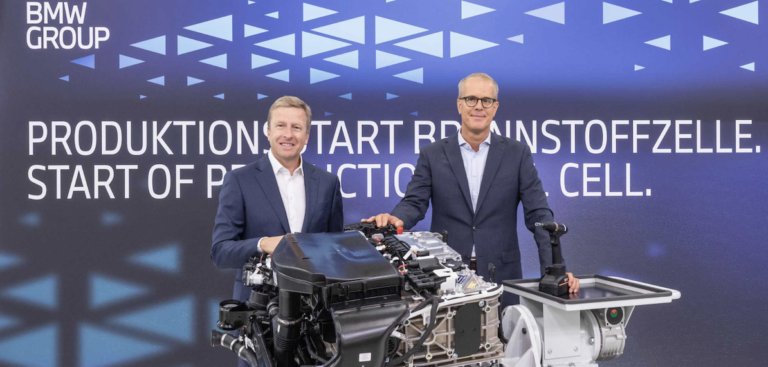BMW has started production of fuel cells for its fleet of iX5 hydrogen-powered vehicles, which will begin a test and demonstration program later this year.
“As a versatile energy source, hydrogen has a key role to play on the road to climate neutrality, and it will also gain substantially in importance as far as personal mobility is concerned,” said Oliver Zipse, chairman of the board of management at BMW. “We think hydrogen-powered vehicles are ideally placed technologically to fit alongside battery-electric vehicles and complete the electric mobility picture. By commencing small-scale production of fuel cells today, we are demonstrating the technical maturity of this type of drive system and underscoring its potential for the future.”
“Our many years of research and development work have enabled us to get the very most out of hydrogen technology,” added Frank Weber, member of BMW’s board of management, development. “We have managed to more than double the fuel cell’s continuous output in the second-generation fuel cell in the BMW iX5 Hydrogen, while weight and size have both decreased drastically.”
The BMW Group will manufacture the fuel cell systems at its in-house competence center for hydrogen in Munich. The cells will generate a continuous output of 125kW and will be coupled with one of BMW’s fifth-generation BMW eDrive motors and a purpose-developed battery, enabling the powertrain to deliver a peak output of 275kW.
BMW sources the individual fuel cells required for manufacturing the BMW iX5 Hydrogen from Toyota; the two companies have been collaborating on fuel cell drive systems since 2013. Fuel cell systems are manufactured in two main steps. The individual fuel cells are first assembled into a fuel cell stack. The next step involves fitting all the other components to produce a complete fuel cell system.
Stacking of the fuel cells is a fully automated process. Once the individual components have been inspected for any damage, the stack is compressed by machine and placed in a housing. The stack housing is manufactured in the light metal foundry at BMW Group Plant Landshut using a sand-casting technique. The pressure plate, which delivers hydrogen and oxygen to the fuel cell stack, is made from cast plastic parts and light-alloy castings, also from the Landshut plant. The pressure plate forms a gas-tight and water-tight seal around the stack housing.
Final assembly of the fuel cell stacks includes a voltage test along with extensive testing of the chemical reaction within the cells. Finally, all the different components are fitted together in the assembly area to produce the complete system. During this system assembly stage, further components are fitted, such as the compressor, the anode and cathode, the high-voltage coolant pump and the wiring harness.


